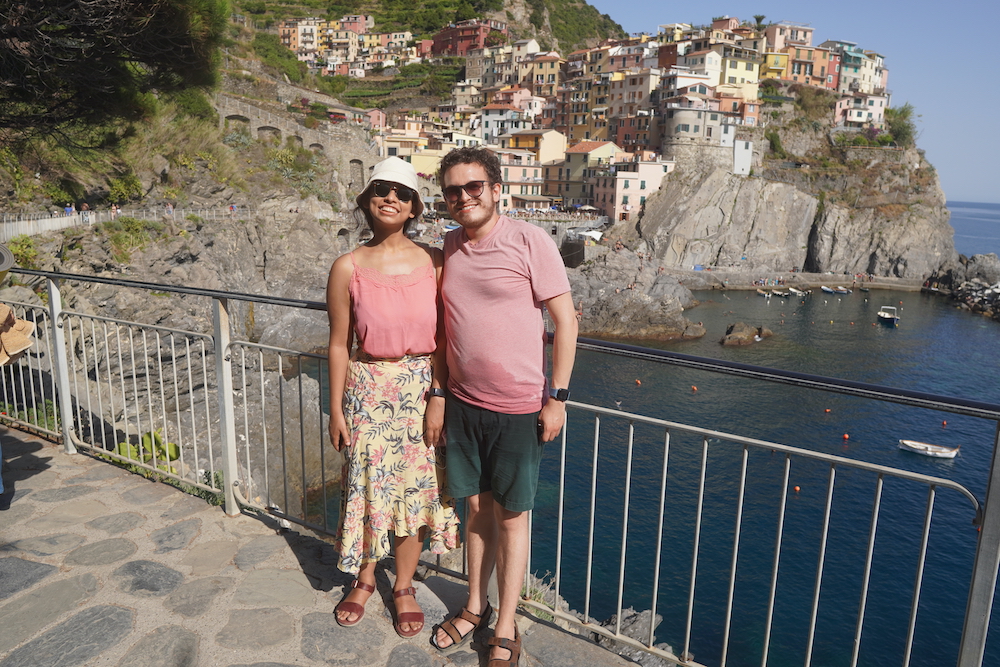Getting around in Cinque Terre
Written on August 5th, 2021 by Renan Greca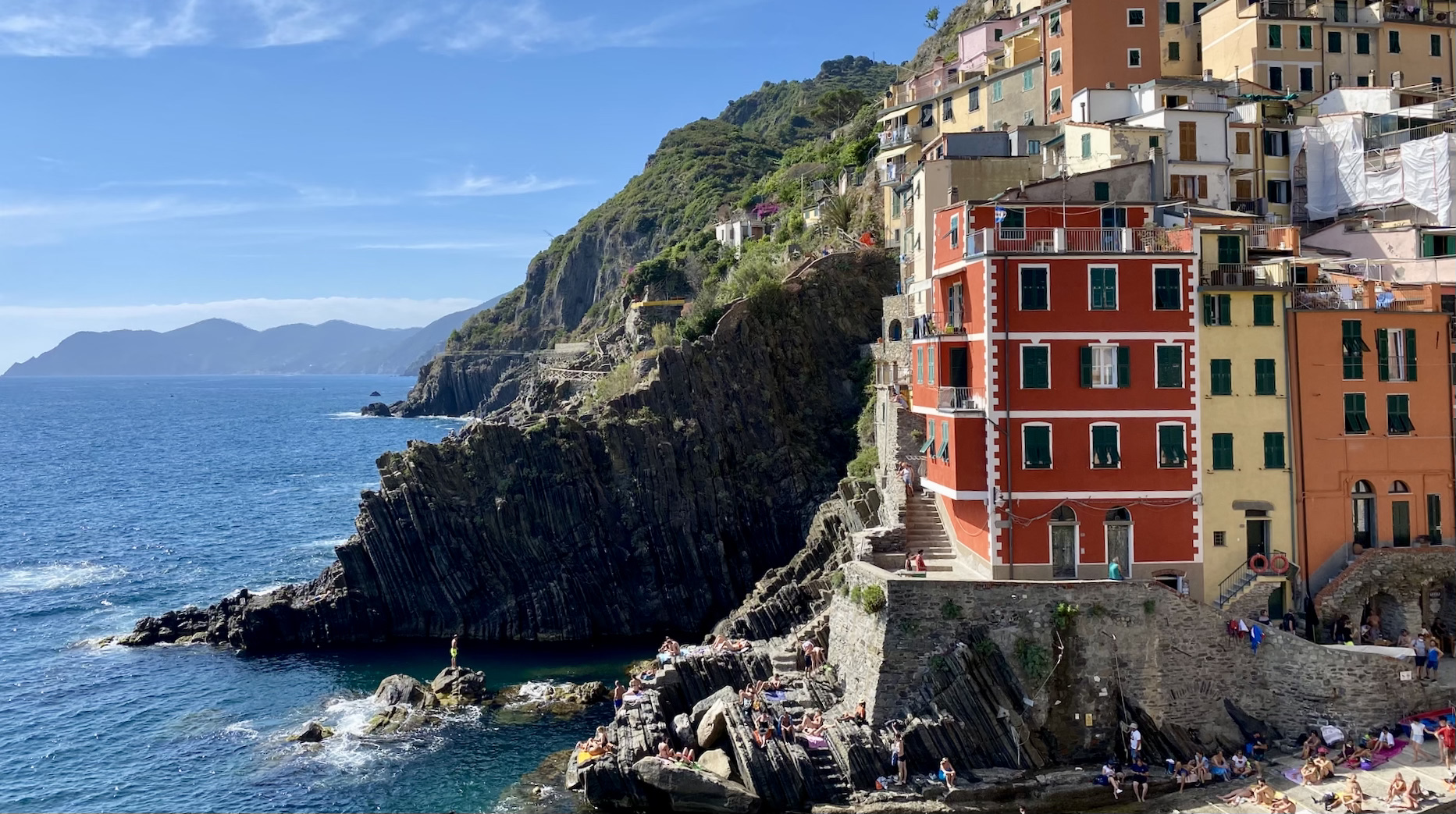
The first leg of our trip was Cinque Terre, a national park in Italy that Debo and I have been meaning to come for quite a long time — before COVID-19 forced us to delay our plans. Now, being vaccinated ourselves and with Italy as a whole reaching a high level of vaccination, we decided it was time to come.
Cinque Terre is easy to reach from most major Italian cities. From L’Aquila, we took a bus to Rome and from there we caught a train to Pisa. This was the worst part of the trip, since it was a “Regionale Veloce” train not really meant for long routes such as the four-hour ride from Rome to Pisa. After about one and a half hour, enough people got down on the coastal towns and we were finally able to find a seat and eat the snacks we had packed. Before that, I had to sit on top of my suitcase, on the floor near the exit. That’s what we get for choosing the cheapest tickets! Luckily, there are other (more expensive) options to avoid situations like this.
From Pisa, we had to take two more short trains. First to La Spezia, which is the “gateway” to Cinque Terre and the capital of the province where the park is located; then to Riomaggiore, which is the southernmost of the five terre and the place where we had an apartment booked.
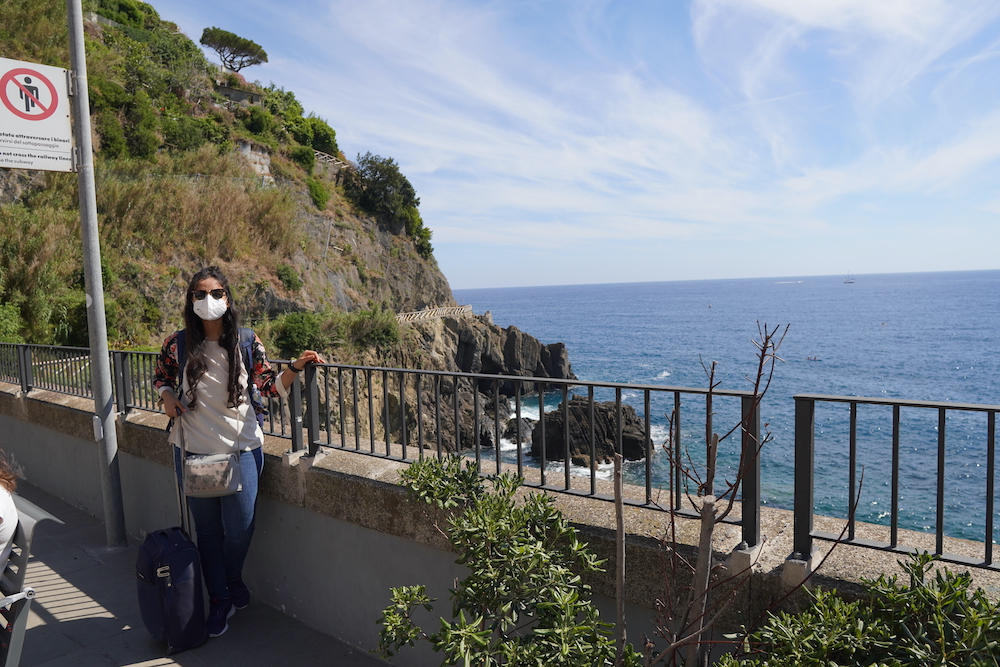
Cinque Terre, as the name implies, is a group of five villages located in the southeastern part of the Italian Riviera. These villages are Riomaggiore, Manarola, Corniglia, Vernazza and Monterosso. Despite the apparent similarities between them, each one has its own vibe. Travelling between them is easy: for comfort and speed, the 5 Terre Express train costs 4€ per ride or 16€ on a daily pass; for sightseeing, there is also a boat (called battelli) that travels along the coast, although the cost varies depending on the length of the ride. The most adventurous travelers can also hike across the park, although we preferred not doing that due to the intensity of the summer sun.
Riomaggiore
Riomaggiore has an astounding view from the moment you get off the train: the station is located right in the middle of a gorge which shifts in beauty according to the position of the sun. It’s also a nice place from which to take boat tours or start a hike towards the other villages. There is also a small beach, although it’s of the rocky kind that looks beautiful but can be rather uncomfortable for a swim. Any walk in Riomaggiore is a workout for the legs, since the whole town is steep, so slopes and stairs are everywhere.
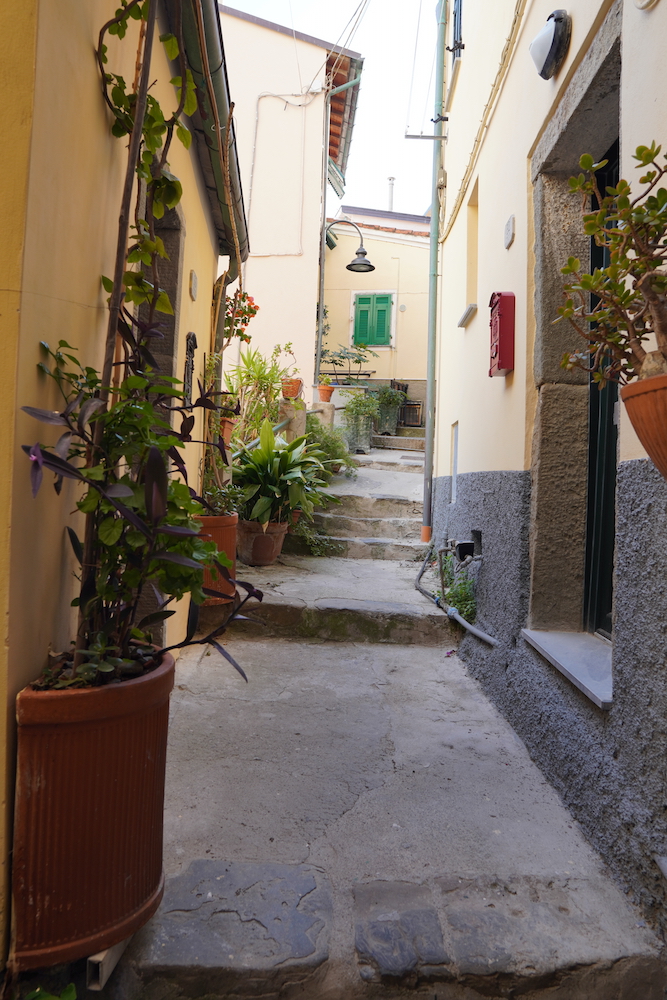
Monterosso
Monterosso is the northernmost terre and it’s also the most popular destination for those looking for a beach. Hundreds of parasols can be easily reached from the train station, although they’re not situated in the most historic part of the town. By either crossing a tunnel or walking around a large rock, you can reach the main part of Monterosso, which is the location where Disney-Pixar’s newest film, Luca, is most closely inspired by.
Debo’s main objective there was to eat a Torta Monterossina, specialty of Pasticceria Laura. We had to queue up to enter the bakery, but the last slice of Monterossina was served mere seconds before our turn. This resulted in a very grumpy Debo, who had to satisfy her stomach with an onion focaccia — not the worst fate in the world. Around an hour and a half later, we returned to Laura and sat down to wait, assured that the next batch of pie would arrive soon. Finally, we were able to buy two slices for 3€ each and the conclusion was… somewhat disappointing. The pie has a milk custard base with a generous layer of chocolate, which even for my tastes was way too sweet.
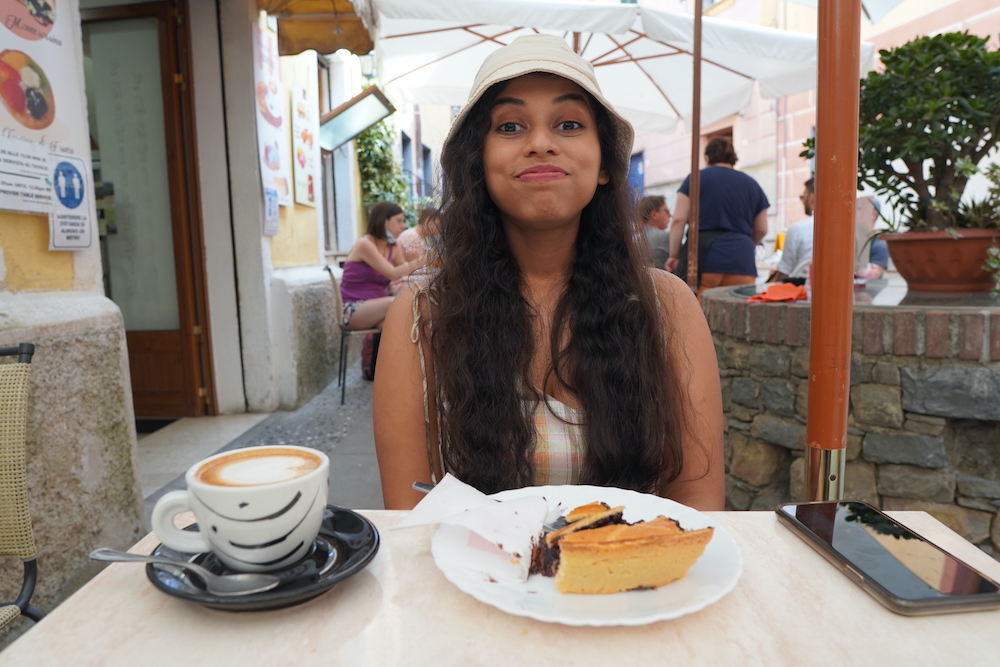
Vernazza
Vernazza is the most touristy of the villages and the small streets quickly get crowded with people moving between the restaurants and the seaside. With clear blue water, the temptation to go for a swim is strong; those willing to go can easily join people who spend their days jumping off rocks into the sea. Since we were there for a relaxing time, we instead sat on a rock and dipped our feet in the water, which was a nice way to cool down our bodies after so much sunlight. To get a panoramic view, we climbed some steep steps toward a sanctuary/cemetery, from where we could see the entire village. We wrapped up our stay there with an aperitivo, trying two local drinks: the 5 Terre wine from a local winery called Cheo, and a Limoncino. To go along with it, we also had a focaccia with tomato and mozzarella — don’t come to Liguria without eating some focacce.

Corniglia
Corniglia is the smallest of the five villages and also the only one that is not on the coast. This means that, from the train station, you have two options: either take a small shuttle up the hill, or climb the stairs. The stairs are long, but the steps are not steep, so it’s not a very difficult climb. Regardless, the workout will likely open your appetite! Amongst the small alleys of Corniglia, I had a gelato at Gelateria Alberto and a focaccia at Bistrò Margherita 2.0 — both were fantastic.
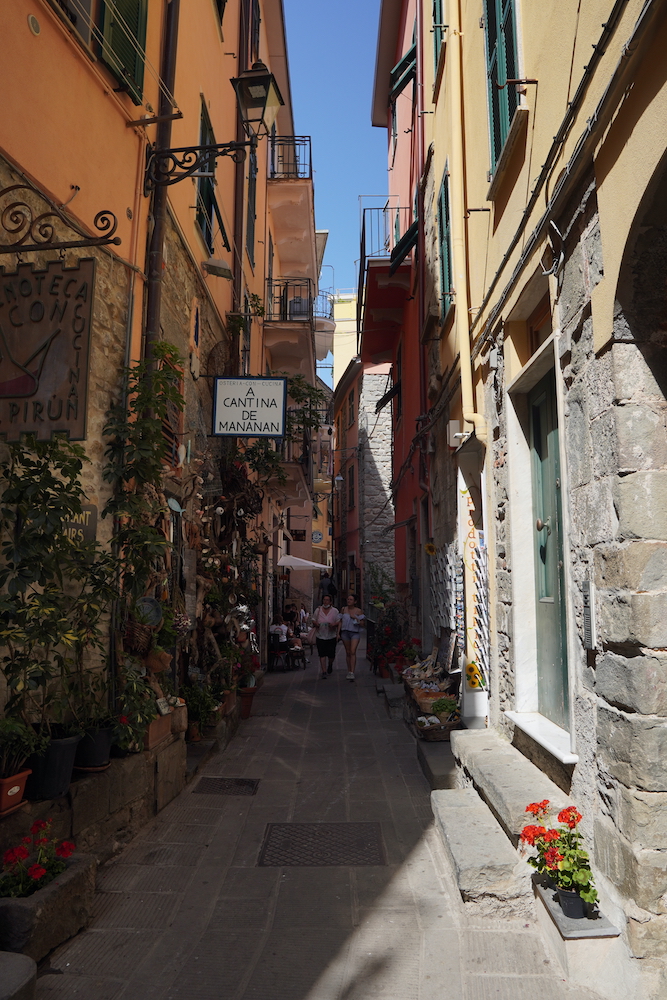
Manarola
Our last stop was at Manarola, which is somewhat split into a lower part near the shore, and a higher part on the sides of the hills. Going from one to another is, again, quite a workout, so plan accordingly. In my opinion, Manarola was the best village to swim in the sea. The rocks form natural pools of calm water where even kids and elders can swim with tranquility.
Cinque Terre is a beautiful and unique place, definitely worth visiting at least once. Each town is quite small, so it is possible to see everything in a day, but we’d recommend 2-3 days to enjoy everything with no rush. Whether the goal is to swim, eat, hike or sunbathe, these five villages will get the job done.
